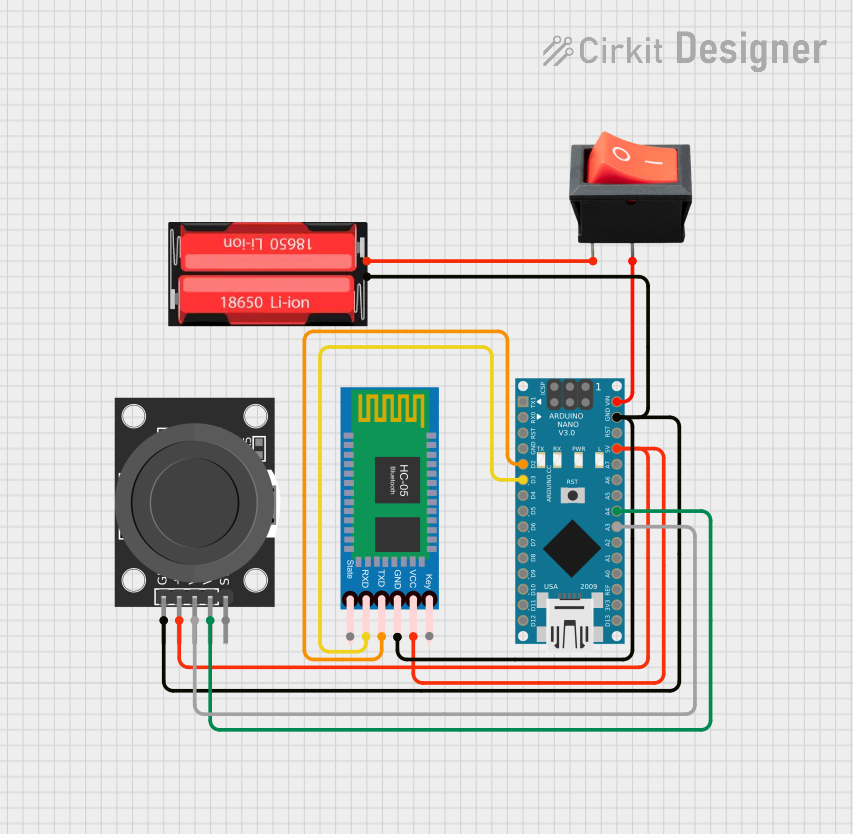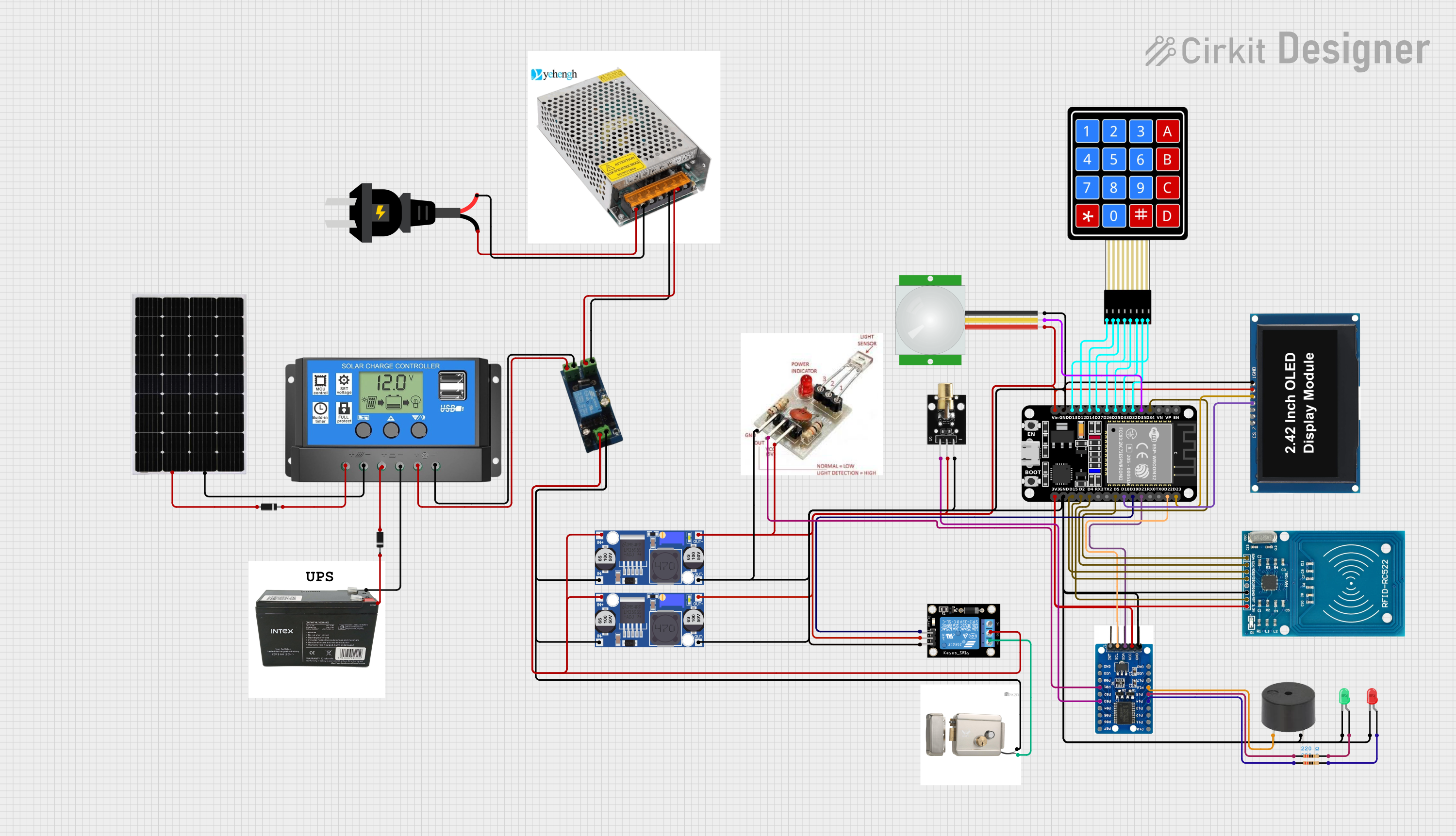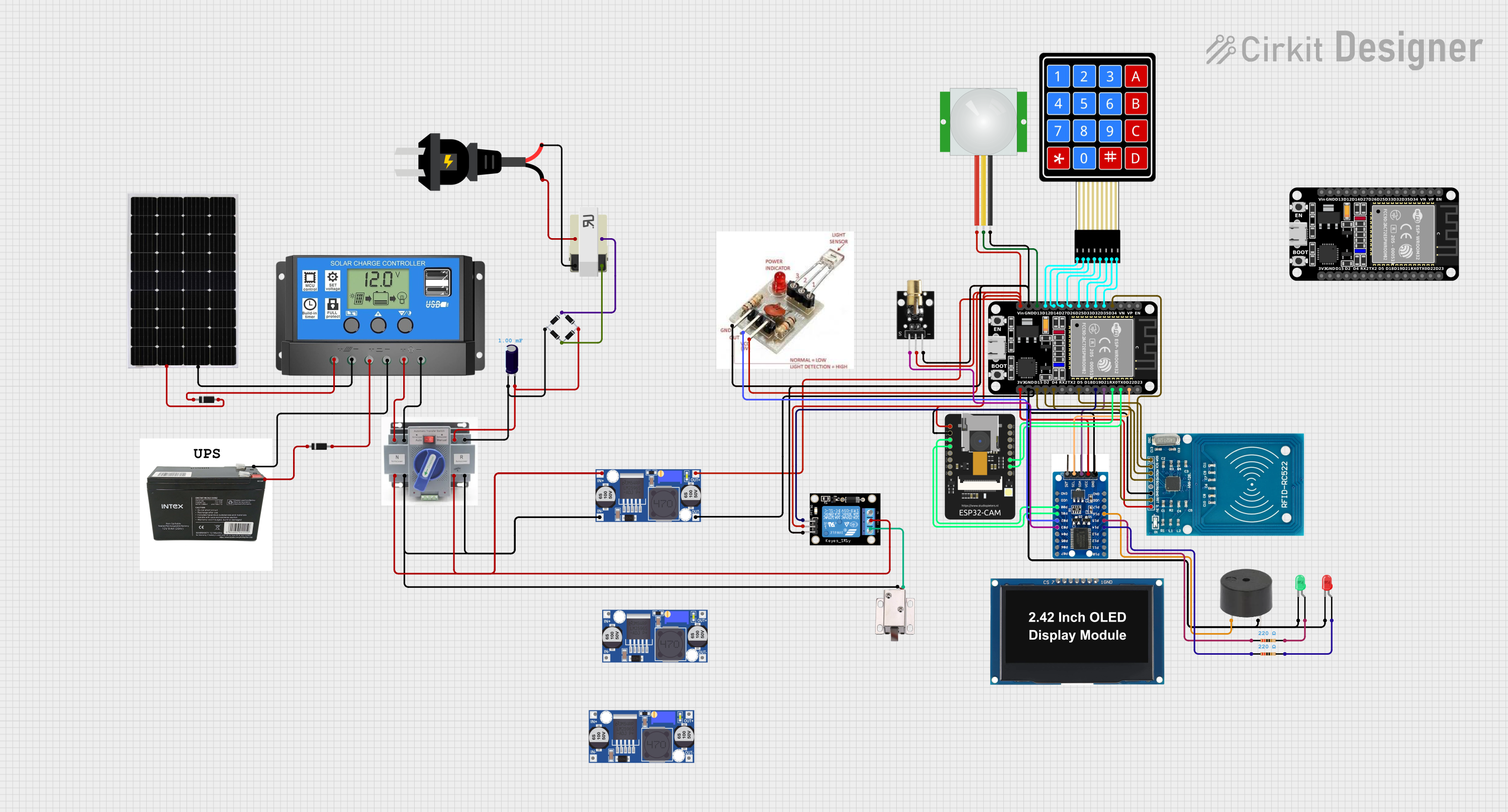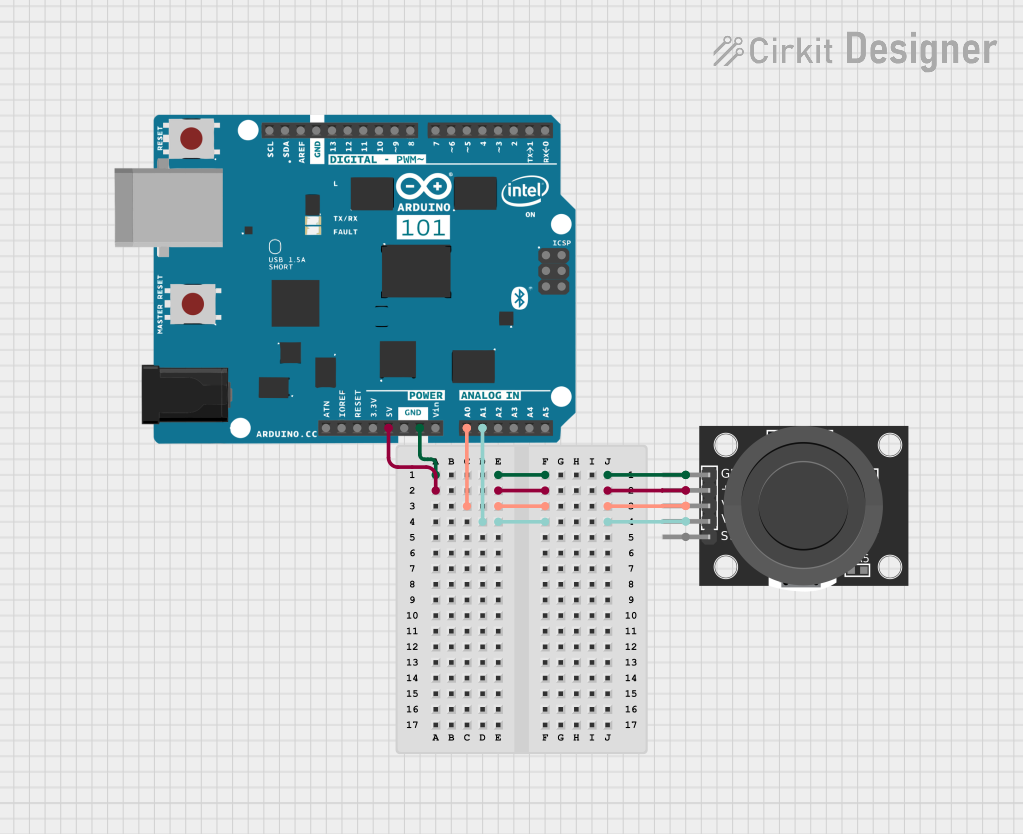
How to Use KY-033: Examples, Pinouts, and Specs

 Design with KY-033 in Cirkit Designer
Design with KY-033 in Cirkit DesignerIntroduction
The KY-033 is an infrared (IR) obstacle avoidance sensor module designed to detect the presence of nearby objects using infrared light. It features an IR transmitter and receiver that work together to sense distances and detect obstacles in its path. This module is widely used in robotics, automation, and other projects requiring object detection or proximity sensing. Its compact design and ease of use make it a popular choice for hobbyists and professionals alike.
Explore Projects Built with KY-033

 Open Project in Cirkit Designer
Open Project in Cirkit Designer
 Open Project in Cirkit Designer
Open Project in Cirkit Designer
 Open Project in Cirkit Designer
Open Project in Cirkit Designer
 Open Project in Cirkit Designer
Open Project in Cirkit DesignerExplore Projects Built with KY-033

 Open Project in Cirkit Designer
Open Project in Cirkit Designer
 Open Project in Cirkit Designer
Open Project in Cirkit Designer
 Open Project in Cirkit Designer
Open Project in Cirkit Designer
 Open Project in Cirkit Designer
Open Project in Cirkit DesignerCommon Applications
- Obstacle detection in robotics
- Line-following robots
- Automation systems
- Proximity sensing in smart devices
- Object detection in conveyor systems
Technical Specifications
The KY-033 module is designed for simplicity and reliability. Below are its key technical details:
| Parameter | Specification |
|---|---|
| Operating Voltage | 3.3V to 5V |
| Operating Current | 20mA (typical) |
| Detection Range | 2cm to 30cm (adjustable via potentiometer) |
| Output Type | Digital (High/Low) |
| IR Wavelength | 940nm |
| Dimensions | 3.1cm x 1.5cm x 0.7cm |
Pin Configuration and Descriptions
The KY-033 module has three pins, as described in the table below:
| Pin | Name | Description |
|---|---|---|
| 1 | VCC | Power supply pin. Connect to 3.3V or 5V. |
| 2 | GND | Ground pin. Connect to the ground of the circuit. |
| 3 | OUT | Digital output pin. Outputs HIGH when no obstacle is detected, LOW when an obstacle is detected. |
Usage Instructions
The KY-033 is straightforward to use in a circuit. Follow the steps below to integrate it into your project:
Connecting the KY-033
- Power the Module: Connect the
VCCpin to a 3.3V or 5V power source and theGNDpin to the ground. - Connect the Output: Connect the
OUTpin to a digital input pin on your microcontroller (e.g., Arduino UNO). - Adjust Sensitivity: Use the onboard potentiometer to adjust the detection range and sensitivity of the sensor.
Example Circuit with Arduino UNO
Below is an example of how to connect the KY-033 to an Arduino UNO:
VCC→ 5V on ArduinoGND→ GND on ArduinoOUT→ Digital Pin 2 on Arduino
Example Arduino Code
// KY-033 Obstacle Avoidance Sensor Example
// Connect the OUT pin of the KY-033 to Arduino digital pin 2
const int sensorPin = 2; // KY-033 OUT pin connected to digital pin 2
const int ledPin = 13; // Built-in LED on Arduino
void setup() {
pinMode(sensorPin, INPUT); // Set sensor pin as input
pinMode(ledPin, OUTPUT); // Set LED pin as output
Serial.begin(9600); // Initialize serial communication
}
void loop() {
int sensorValue = digitalRead(sensorPin); // Read the sensor output
if (sensorValue == LOW) {
// Obstacle detected
digitalWrite(ledPin, HIGH); // Turn on LED
Serial.println("Obstacle detected!");
} else {
// No obstacle
digitalWrite(ledPin, LOW); // Turn off LED
Serial.println("No obstacle.");
}
delay(100); // Small delay for stability
}
Important Considerations
- Power Supply: Ensure the module is powered within its operating voltage range (3.3V to 5V).
- Ambient Light: The sensor's performance may be affected by strong ambient light. Use it in controlled lighting conditions for best results.
- Potentiometer Adjustment: Fine-tune the detection range using the onboard potentiometer to suit your application.
Troubleshooting and FAQs
Common Issues and Solutions
The sensor is not detecting obstacles:
- Ensure the module is powered correctly (check
VCCandGNDconnections). - Adjust the potentiometer to increase sensitivity.
- Verify that the obstacle is within the detection range (2cm to 30cm).
- Ensure the module is powered correctly (check
False detections or inconsistent readings:
- Avoid using the sensor in environments with strong IR interference (e.g., direct sunlight).
- Check for loose or faulty connections in the circuit.
Output pin always HIGH or LOW:
- Ensure the IR transmitter and receiver are clean and unobstructed.
- Verify that the module is not damaged by testing it with a known working circuit.
FAQs
Q: Can the KY-033 detect transparent objects?
A: The KY-033 may struggle to detect transparent or highly reflective objects due to the way infrared light interacts with such surfaces.
Q: Can I use the KY-033 with a 3.3V microcontroller?
A: Yes, the KY-033 is compatible with both 3.3V and 5V systems. Ensure the VCC pin is connected to the appropriate voltage source.
Q: How do I increase the detection range?
A: Use the onboard potentiometer to adjust the sensitivity. Turning it clockwise typically increases the detection range.
Q: Is the KY-033 suitable for outdoor use?
A: The KY-033 is not designed for outdoor use, as strong sunlight and environmental factors can interfere with its IR detection capabilities.